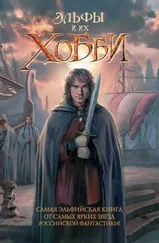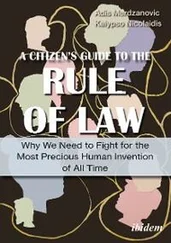By June 1935 both sides were willing to at least listen to the latest — the eighteenth — attempt to broker a peace. Paraguay realized it was at the breaking point and agreed to end the war. Diplomats from the five nearby countries — Brazil, Argentina, Chile, Uruguay, and Peru — along with the United States, pushed the sides to stop the senseless slaughter. When the meeting was about to break up without a deal, the U.S. representative, Alexander Wilbourne Weddell, ambassador to Argentina, demanded the sides work out their differences. They listened. A truce broke out while a commission from the mediating countries marked out a border across the Chaco to divide the non-spoils of war.
Bolivia and Paraguay agreed to stop the fighting at noon on June 14. All morning the two armies peered at each other from their trenches. With just half an hour before the deadline, for no apparent reason they started firing at each other. The fusillade grew, and soon both armies feverishly unleashed their weapons, blowing through stores of ammunition. The casualties mounted. At noon, whistles blew and the firing stopped. Half crazed from the slaughter and delusional from knowing it was actually over and they had survived, soldiers on both sides cheered and danced with enemies that only minutes earlier they’d tried to kill. It was a bloody, senseless end to a bloody, senseless war.
The war’s only purpose was to prove to any doubters that a meaningless war, fought over a meaningless and barren land, is not enough to spring a country from the losers’ bracket.
Jubilation broke out throughout South America when the war ended. So relieved was the world that the organizer of the peace conference, Carlos Saavedra Lamas, the Argentine foreign minister, received the Nobel Peace Prize for his efforts. In fact, ending the war propelled him to the presidency of the assembly of the League of Nations. The peace conference met for three years before they settled on the treaty’s final terms on how to divide the Chaco.
Bolivia and Paraguay endured enormous casualties from the fight. Bolivia suffered nearly 50,000 deaths; about 2 percent of its total population, while Paraguay had about 40,000 dead, nearly 3.5 percent of its population. This would translate percentage-wise to about 10 million dead for the United States today.
As for the leaders, Estigarribia was forced into exile after a coup in 1936 but returned from Argentina three years later. On August 15, 1939, he became Paraguay’s president. Unhappy with the temporary nature of the country’s presidents, he promoted himself to dictator, but in 1940 he renounced his position and declared he would hold elections. Since no good deed goes unpunished, a few months later his plane crashed, killing him along with his wife and the pilot.
In 1938 the six-member commission finally drew the border between the two warring countries. Paraguay received the bulk of the Chaco; Bolivia got a chunk of the western section near its oil fields and a slice providing it with a small port on the Paraguay River with access to the Atlantic Ocean. It was a deal both sides could have worked out years before the war.
The Chaco is still wildly depopulated, amazingly worthless, and filled with flies. Both countries are still landlocked nanopowers.
NINE.
THE WINTER WAR BETWEEN RUSSIA AND FINLAND: 1939
Hubris is the theme of many ancient Greek plays and also some foolish modern plays for power.
It’s hard to think of Josef Stalin as a tragic figure from a Greek drama, unless plays have been unearthed featuring a paranoid, murderous thug with a shag mustache. Although the Soviet dictator caused tragedy wherever he and his army went, he himself was not tragic. Nevertheless, in failing to understand or even entertain the idea that the Finns might put up some resistance to being invaded, Stalin showed a Siberian-sized amount of hubris.
And that is exactly what Stalin did when he decided to invade Finland in late 1939, in a fit of logic, to extend the Soviet borders at the expense of the Finns and prepare his country’s defenses for the inevitable German invasion. Expecting a short winter romp in the snow, the Russians made no preparations for a prolonged campaign featuring actual fighting by a breathing enemy. The Soviets poured wave after wave of undertrained and ill-equipped troops into the dark, cold Finnish winter. They suffered one of the most lopsided defeats in modern warfare. All the while, Stalin’s real enemy, Adolf Hitler, watched in glee as little Finland pounded the fabled Red Army.
Josef Stalin— evil Rex Soviet leader who signed a nonaggression pact with the equally evil Adolf Hitler, all the while fearing that — could it be true? — Hitler would stab him in the back and actually invade.
Skinny — Adopted the motivational program for his generals that those who finished in first place got to keep their jobs, those in second place got an all-expense paid trip to a Siberian gulag, and the third place winners got taken out behind Ukraine and shot.
Props — Equal Opportunity Killer.
Pros — Bested the Nazis in the mother-of-all-evildoer death matches.
Cons — Just about everything else.
Field Marshal Carl Gustav Mannerheim— known as “Тhe Кnight of Еurope,” the aristocratic general was the supreme commander of the Finnish armed forces. For years he beat the drum for a stronger military to protect against the inevitable rambling of the Soviet Bear, but his Finnish leaders ignored him. In frustration, he resigned in 1939 but before it took effect the Soviets attacked, and he was named to lead the defense.
Skinny — His first language was Swedish, but then he spent thirty-five years in the Russian army, admiring the tsars. When he returned to Finland in 1918, he needed a translator to talk to his Finnish troops.
Props — Was so famous in Finland that the country’s main line of defense against the Soviets was named for him.
Pros — Fought the Communists when they were called Bolsheviks and fought them when they were called Soviets. He even fought them as Hitler’s ally. But he still couldn’t bring back the tsar.
Cons — Never really felt comfortable with the whole democracy thing.
In 1939 the world had dissolved into a very dangerous place. Hitler had swallowed Austria and Czechoslovakia without much opposition. Poland was next. He was concerned, however, with how the Soviets would react to this little foray. Hitler’s people and Stalin’s people had a chat, then a talk, and finally a meeting. The result was the Nazi-Soviet Nonaggression Pact. It was reported to the world in late August without a hint of irony that a treaty between two of the most aggressive countries in history contained the word nonaggression .
Publicly, the treaty was all about trade and other good stuff. Privately, Hitler got Stalin to agree not to object to his planned takeover of Poland. Even better, they divvied up Poland and the small countries between them like they were M&Ms. Hitler got the blues and greens while Stalin got to turn the others into reds. In particular, the treaty gave Finland to Stalin.
With the treaty signed, Hitler green-lighted the invasion of Poland on September 1, 1939, and when the British and French raced to Poland’s rescue with a firestorm of angry words about Adolf, World War II was on. Adolf swore up and down that he would never, ever consider invading Russia, but Stalin, to his credit, still had doubts about Hitler’s character. Stalin decided to beef up the defenses of Leningrad and the navy bases surrounding the eastern end of the Baltic Sea, just in case Mr. Hitler turned out not to be who he said he was. A quick check of the map, however, revealed to Stalin that the Finns actually owned most of the land approaching Leningrad.
Читать дальше












